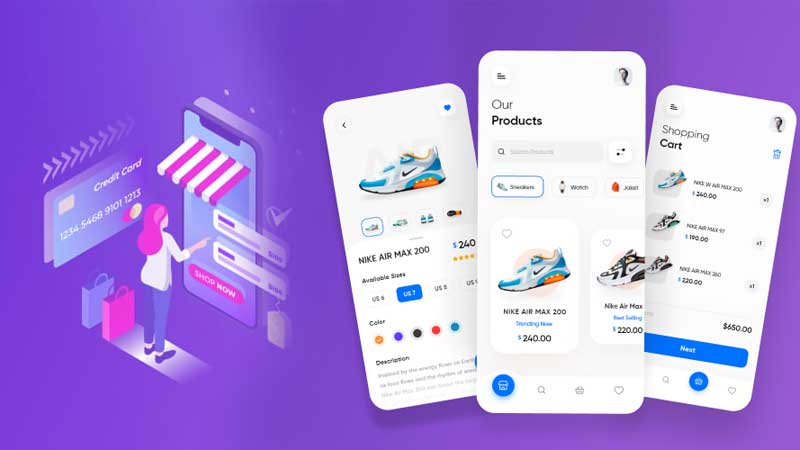How to Become a Full Stack Java Developer in 5 Steps
Full-stack developers are web programmers who work on all the 3 layers of web-based applications, including the front-end, back-end, as well as database layers. A programmer who works on Java for this purpose is known as a Full Stack Java Developer. As the number of websites rises due to increasing preference for digital content, there is also an increasing demand for such professionals currently.
Both private, as well as government entities, are looking for professionals who have undergone a Full Stack Java Developer course and can provide support to their operations. As a result, there is also a rising craze among both freshers and professionals to enhance their skills in the field of full-stack development. According to Internshala, enrollment in web development courses has increased by 230% in the 2017-2021 period.
To help this lot of aspiring candidates, we are listing 5 key steps below which they should follow to become a good full stack java developer.
Step 1: Learn the Basics
- Java is a complex programming language and so the first step should be to start learning the basics of Java and various OOPs concepts.
- One can learn the basics by enrolling in beginner training courses, online or offline.
- Instead of focusing on only one element of coding, one should consider developing their abilities in all areas of java.
Step 2: Join a Course
- A career as a full-stack developer may require a bachelor’s or a master’s degree in a related field.
- Degrees in computer science and web design include courses in Java, front-end design, and back-end development.
- Having a degree will fulfill the educational requirements for the job and will also convince the employers that one is skilled in both fundamental and advanced coding techniques.
Step 3: Skill-Building
As a full-stack developer, one needs to have expertise in various skills related to front-end, back-end, database, and also knowledge of essential tools. It is not necessary to learn all the tools and technologies but they can choose what works best for them.
Front-End Technology Skills
It includes all the tools and technologies that are involved in the designing elements that appear to users as they interact with the applications.
HTML, CSS, and JavaScript
- One should have a good knowledge of HTML, CSS, and JavaScript, as they are web development fundamentals.
- HTML is used for web page development, CSS is used to style up HTML web pages, and JavaScript is used to manipulate HTML DOM.
Also Read: What Does a UI/UX Designer Actually Do?
Front-end Frameworks
A full-stack Java developer should excel in at least one of the modern front-end frameworks like Angular, React, or VueJS.
- Angular – It is a framework and platform for building client applications in HTML and TypeScript. It implements the core and optional functionality as a set of TypeScript libraries that you import into your apps.
- React – Used for building user interfaces, React is a javascript library that has a component-based architecture. It allows the application to be broken down into small encapsulated parts that can then be composed to make a more complex UI.
- Vue – It is a framework for building user interfaces. It is highly adaptable as its core library is easy to pick up and integrate with other libraries or existing projects.
NodeJs and NPM
- NodeJs – It is an open-source JavaScript runtime environment that can execute JavaScript code outside a web browser.
- NPM – It is a package manager to install JavaScript packages or libraries.
Back-end Technology Skills
It involves all the tools and technologies that support an application’s visible elements.
Core Java
Having a good foundation in Core Java is important as it is the base for all the Java EE frameworks and technologies.
Spring Framework and Spring Boot
- Spring Framework – It is a Java platform that supports infrastructure for developing Java applications. It is a must-learn skill as it makes Java EE development easier.
- Spring Boot – It is an extension of the spring framework that helps developers build spring-based applications easily and quickly. It eliminates the requirement to write the same boilerplate configuration again and again.
Hibernate Framework
- It is an important framework to develop the DAO layer.
- It’s a java-based ORM tool that provides a framework for mapping application domain objects to the relational database tables and vice versa.
- It acts as an additional layer on top of JDBC and enables the implementation of a database-independent persistence layer.
Spring Security
It is a popular framework for implementing Authentication and Authorization features to secure REST API and web applications.
Microservices
- Since the architecture of companies is changing constantly, it is high time for java developers to learn microservice architecture.
- The Spring framework provides Spring Cloud and Spring Boot that helps in microservice development in Java.
Knowledge of Databases
- Full-stack developers need to have a good knowledge of databases as it acts as storage and aids in the application recall of data within the other two layers.
- Some of the commonly used relational databases are MySQL, PostgreSQL, MS-SQL Server, and Oracle.
- Some of the No SQL Databases are MongoDB, CouchDB, Elastic Search, etc.
Knowledge of Tools
- A full-stack java developer should have knowledge of the essential tools to develop and deploy web applications.
- Some of such tools are Apache Maven, Gradle, Git, Jenkins, Eclipse and IntelliJ IDEA, Docker, JIRA, SVN, Apache Ant, Java Decompiler, etc.
Step 4: Projects or Apprenticeship
For freshers, getting a job is challenging because they lack experience. So the personal projects and apprenticeship will provide some benefit.
- Personal projects can be added to the resume and can help to portray the skills of an individual.
- The aspiring developers can seek an apprenticeship by working under an expert-level coder directly.
- Projects and apprenticeships can help them learn advanced coding techniques and prepare them for the target career.
Step 5: Build Your Resume and Apply for Jobs
A well-crafted resume is highly important to apply for any job, as it represents the skills and abilities of the candidates to the employers.
- Highlight your knowledge of full-stack development and list the skills that are commonly valued in this position.
- Show that you have the capability to work within a team as well as independently on projects.
- Apply for jobs through various websites like Naukri.com, Indeed, etc. with an updated resume and also update your LinkedIn account.
The above-mentioned skills are the basic technologies that a java developer should be aware of. Learning them will build a strong foundational java base and will also help to easily learn the complex tools and techniques.














